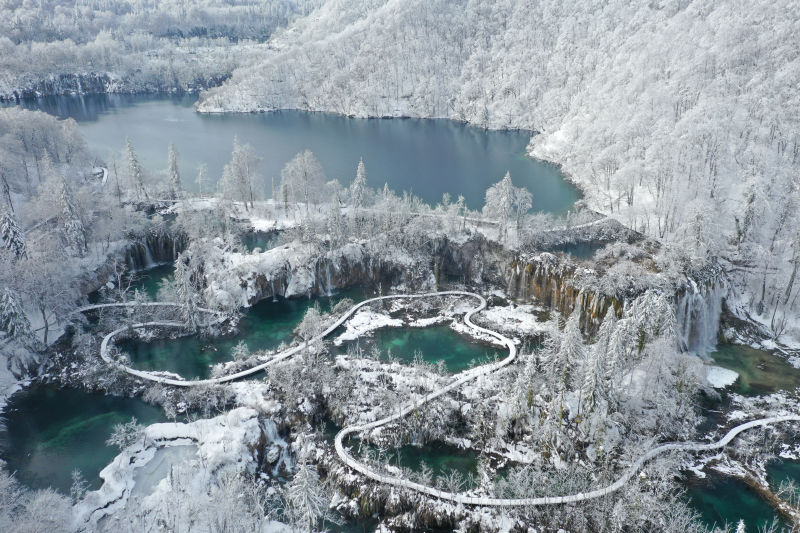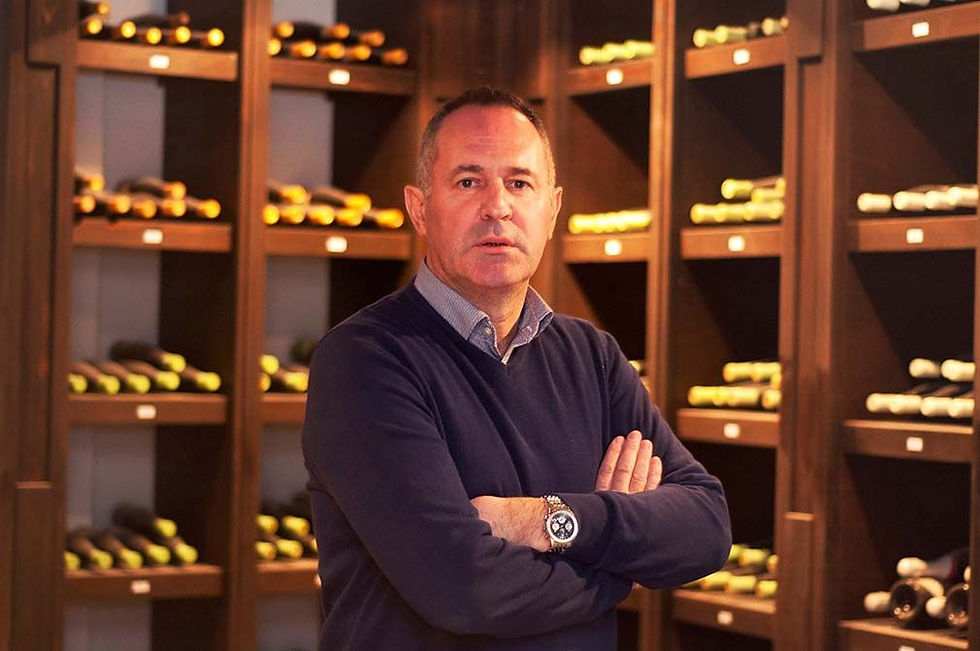Travnik - Gastronomy of the Vizier Town
- Taste of Adriatic
- Sep 29, 2019
- 6 min read
There is probably no such well-preserved heritage of Ottoman history in Bosnia as there is in Travnik. This old Vizier town is located in the valley of the river Lašva, embraced by two mountains, Vilenica and Vlašić. At every turn, there are cultural traces from different epochs, which can be seen to some extent in city museums, but much more so in the daily lives of people who pleasantly walk around mosques, forts and churches that are centuries old.

All this is clearly seen from the Old Town. The fortress that overlooks today's Travnik dates from the second half of the 11th century, when there was a parish of Lašva, and was eventually ruled by Duke Hrvoje Vukčić Hrvatinić. After the Ottoman conquest, Travnik became the seat of the Bosnian viziers in 1669, who remained there for over 140 years. At the same time, the Muslim, Catholic, and Orthodox populations are growing in Travnik as the city becomes a commercial and craft centre. There is little that interests my colleagues as we stroll through the Old Town. Usually, instead of racing toward the lookout, we come across a cafe where brandy is poured in large quantities. There are no halals inside the walls! We drink herb rakija under the centuries-old canopy and talk to the waitress, who nevertheless drives us to master a few hundred stairs and admire the panorama of the city. Below us is the centre with multiple Islamic buildings, especially the Jeni Mosque, the Varoš Mosque, the Kahvica Mosque, the Clock Tower, and especially the Colourful (Šarena) Mosque in the heart of the city, which captivates with its exterior as much as the peace within it.

On the wings of the breeze, I hear words from the Travnik Chronicle of Nobel Laureate Ivo Andrić, a native of Travnik, whose house has been turned into a Memorial Museum. Such romance does not interest empty stomachs looking for something specific to eat from Travnik. And you really need to taste Travnik! After trying Banja Luka, Mostar and Sarajevo ćevapi, we can say under our full culinary responsibility that the best ones are to be found in Travnik. And it's not just to alleviate Travnik's anger that can be thrown out by mentioning that some ćevapi are better than theirs. One cannot hide the fact that ćevapi is the most popular dish of Bosnia and Herzegovina, as a specialty beyond nation and religion, and which has been feeding the hungry Bosnian and Herzegovinian mouths since the 15th century. The recipe for real Travnik ćevapi is, of course, a secret.

Recently, there has been a debate in BiH about enrolling ćevapi on UNESCO's intangible heritage, but the people immediately quarrelled because they could not agree on which ćevapi would be on that list: Banja Luka, Sarajevo or Travnik ones. They differ in appearance and somewhat in taste. Travnik ćevapi is made from beef, veal, mutton and lamb, and the specialty is in flat bread or pitica as it is called in Travnik. With them comes the usual onion and yogurt. Such mastery invites people from all parts of the country to Travnik.

Just as the hungry-for-ćevapi folk go to Travnik, so in Travnik everyone would go to the place Hari. This famous culinary institution of the city is located near the Colourful Mosque and is ever crowded. Waiters harmoniously bring fivers, teners, student portions, whole and ten, medium, large portions. Sometimes it takes a guide to figure out what happens in the end, but in any case, portions are large. A student or school serving is five ćevapi in half a pitica; ten ćevapi in half a pitica is a small portion, and a whole ten is a whole pitica with ten ćevapi. The medium portion is not small at all: it covers 15 ćevapi in the whole pitica, and a large 20 ćevapi in the whole pitica. The inexperienced passer-by is likely to end up with a packaged portion for home, and those unfamiliar with a large amount of food could have ćevapi for breakfast the next day.

Hari is located by the river, and the other side is surrounded by houses of the old way of construction, Ottoman architectural heritage. The people who live here must have got used to the yelling and fuss in Hari, where guests often order more onions and yogurt, an extra serving because, well, the kid wants more (although the parents ate most of the ćevapi wjhile their sons and daughters are left with nothing but a yogurt drink). And the thirst should be quenched with juice or mineral water, since there is no beer in Hari. Hari is a continuous and quality family tradition dating back to 1989. At the beginning of the year, they made the largest portion of ćevapi in BiH, 160 kebabs in pitica, 1.5 meters in diameter, and a total of 2160 ćevapi were offered. Bon apetite!

The succulent grasses and numerous lawns on the heights of Vlašić Mountain gave this town its name. The sheep that are the source of the famous cheese from the Vlašić pastures are free to run here. Vlašić cheese is a great white cheese in brine. It is assumed that this technique was brought about by the nomadic herders - Vlachs, by which Vlašić was named. The cheese was originally made from unpasteurized fresh sheep's milk, immediately after milking. It is made on a mountain in cheese huts or katuns, and is kept here for two to three months for ripening. It is also called Travnik cheese, because the sheep herders brought it to Travnik and sold it there. Since the aroma of sheep's milk is too strong for many palates, so the Travnik cheese is in fact a cow's cheese. It is a bit difficult to find Vlašić cheese in Travnik itself. We did not come across any store where the original brine cheese could be bought. Also, there is little where to find information that cheese can be purchased at many family outlets in the neighbouring place of Turbe. If there is no cheese in Travnik, there is cheese at every turn in Turbe. They are all good and the tradition of production, packaging and sales is carefully kept. Cheese is strong and salty, but for anyone who loves white and sheep cheese, Vlašić cheese is a real boon.

It is also an ingredient in the Travnik steak, which is so well done by the Kastel on Hendek restaurant, situated at the foot of the Old Town itself. True, there are various variants of this dish, some are made with dried beef, some with scrambled eggs, but the famous Vlašić cheese is actually the main ingredient. The recipe is quite simple: the cheese is rolled into veal steaks which are then fried. This relatively new restaurant (opened in 2016) has quickly won over guests with its cuisine, but even more so with its location. The terrace is the best part of the restaurant because it can be easily viewed from the walls of the old fort, and above it is Hendek, a small tributary of the Plava Voda (Blue Water) stream.

Plava voda itself is an indispensable part of Travnik. It is located at the south-eastern entrance to Travnik, and is made up of a cemetery with a turbe of the Travnik mufti Mehmed efendi and his wife Ajiša. There are the remains of mills, water mills and wooden pillars over which the water used for the hydroelectric power plant that brought the first electricity to Travnik flowed. Apart from the restaurant of the same name, which is known for trout, it is great to sit in Lutvina Kahva, a small traditional cafe that is known as the oldest continental cafe in Bosnia and Herzegovina. It is here in 1807 that the novel Travnik Chronicle by Ivo Andrić begins and ends seven years later. After visiting the city, eating ćevapi and Travnik steak, it is best to drink real Bosnian coffee at this place.

Our visit to Travnik was really fruitful. In a country that has a hard time revealing its rich culinary tradition and even more difficult to present to its guests, Travnik stands out as an interesting place to spend a few days. And don't forget to bring cheese from Vlasic with you!








Comments